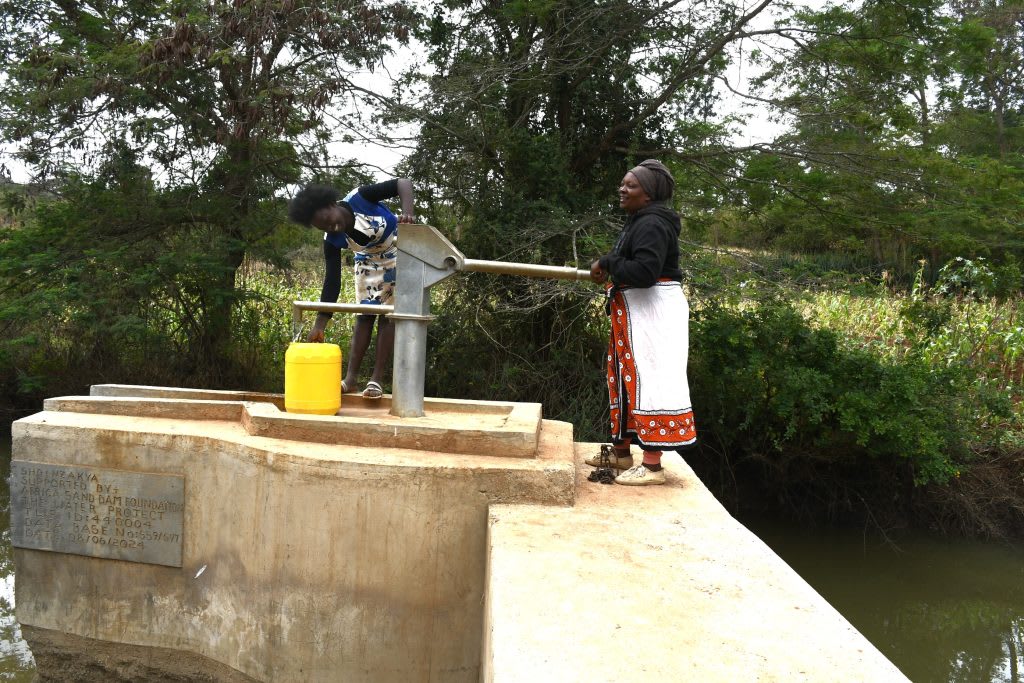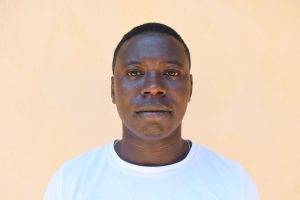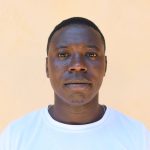The 755 community members who live in Nzakya struggle each day to collect sufficient water to meet their needs.
When field officer Jefferson Mutie described the semi-arid region's struggles with water, he said, "Growing water demand and scarcity have turned into a notable challenge in Kenya. Climate change, population growth, urbanization, water pollution, and poor management of water resources have aggravated the issue of the water crisis, which affects economic activities, food security, education, and health. These challenges are especially evident in rural areas of Southeast Kenya where people are often unable to get clean water."
For the community members living in Nzakya, who love where they live, the water crisis is nothing new, but they are tired of using all of their energy collecting water instead of making significant progress in their lives.
"Life is good in this village. Since I was married here, I found [it] a peaceful village [and] very beautiful. Water was the main headache and still is the worst challenge which we face here. I wake up very early and set off for water [from] the dam. The trek is risky and dangerous," said 43-year-old farmer Peris Nduku, seen below collecting water with her baby on her back.

"I feel offended living in a community whereby women lack the opportunity to get water easily and fast. I am very hopeful that in [the] future, we shall have water security. We shall have women enjoying fetching water and fostering relationships in the family. I am thinking of having a community that has no water-related diseases and no more sicknesses," said Peris.
The primary water source in this community is an earthen dam. Collecting water from the dam is a task mostly left to the adults since it is a dangerous large body of water not close to home. Yet, when families need water to meet their basic needs, and parents are busy producing incomes and maintaining their households, they must take the risk and send older children to collect water.

"My parents like sending me to the dam, which is dangerous and far. This happens after I come back from school, and it forces me to have no time to study and do my homework," said 17-year-old Muli P. Seen below.

But like most bodies of water in Southeast Kenya, particularly the smaller ones, they are prone to drying up when it is not the rainy season, leaving people to search for water elsewhere.
"When the water is very scarce, we opt to rush to River Migwani, which is miles away. The journey is never sweet [and] no one wants to experience it. I would feel very happy to see myself collect water very fast and come back to do my activities back at home. I love playing soccer, which I fail to have time to do," concluded Muli.

Installing a dug well will enable community members like Muli and Peris to have quick, safe access to water so they can collect all the water they need to meet their daily needs. Hopefully, this will give them the time and energy to improve their daily lives and dream about changes they can implement in the future.
Helping to solve the water crisis in this community will take a multi-faceted system. It requires the collaboration of the dug well attached to a sand dam. They will work together to create a sustainable water source that will serve this community for years to come.
The Proposed Solution, Determined Together...
At The Water Project, everyone has a part in conversations and solutions. We operate in transparency, believing it benefits everyone. We expect reliability from one another as well as our water solutions. Everyone involved makes this possible through hard work and dedication.
In a joint discovery process, community members determine their most advantageous water solution alongside our technical experts. Read more specifics about this solution on the What We're Building tab of this project page. Then, community members lend their support by collecting needed construction materials (sometimes for months ahead of time!), providing labor alongside our artisans, sheltering and feeding the builders, and supplying additional resources.
Water Access for Everyone
This water project is one piece in a large puzzle. In Kenya, Sierra Leone, and Uganda, we're working toward complete coverage of reliable, maintained water sources that guarantee public access now and in the future within a 30-minute round trip for each community, household, school, and health center. One day, we hope to report that this has been achieved!
Training on Health, Hygiene & More
With the community's input, we've identified topics where training will increase positive health outcomes at personal, household, and community levels. We'll coordinate with them to find the best training date. Some examples of what we train communities on are:
- Improved hygiene, health, and sanitation habits
- Safe water handling, storage & treatment
- Disease prevention and proper handwashing
- Income-generation
- Community leadership, governance, & election of a water committee
- Operation and maintenance of the water point






 Protected Dug Well
Protected Dug Well
 Rehabilitation Project
Rehabilitation Project































